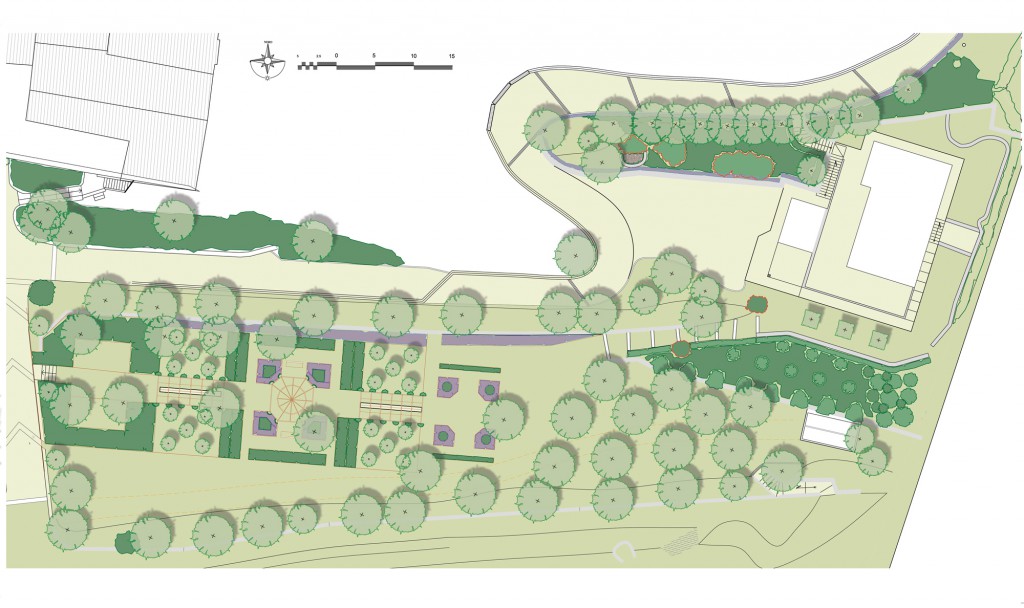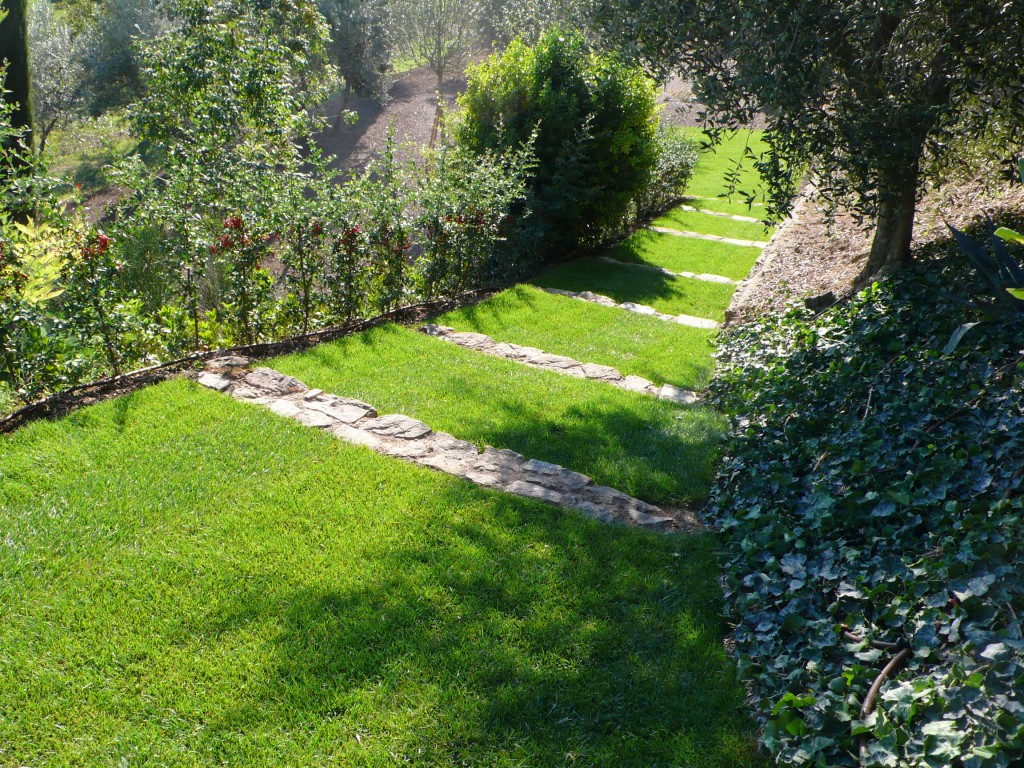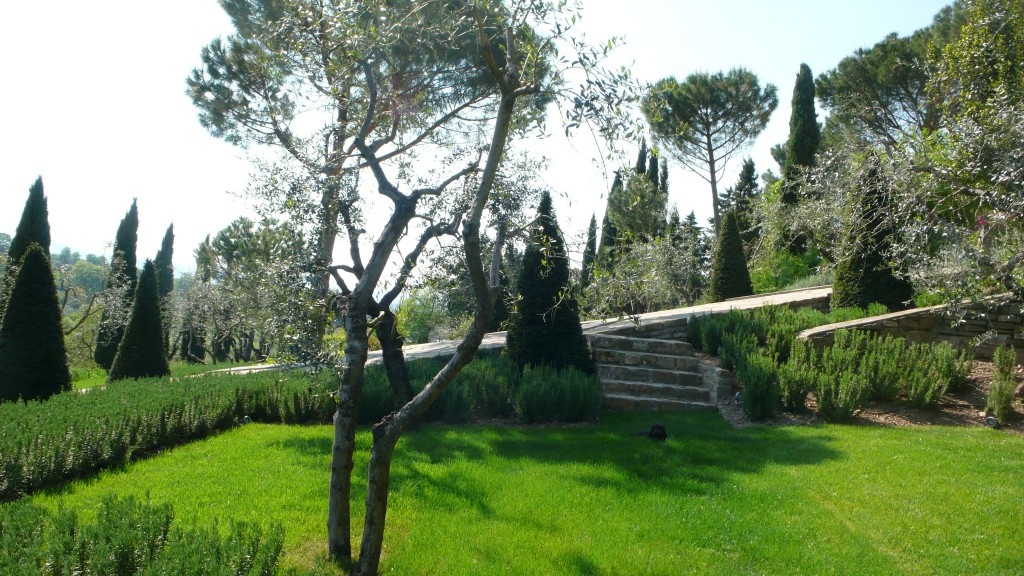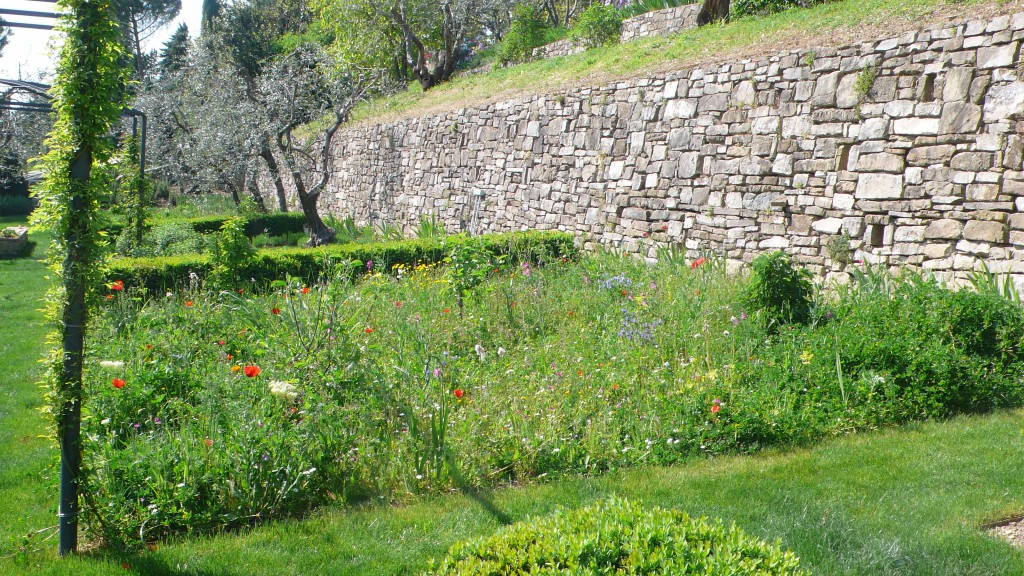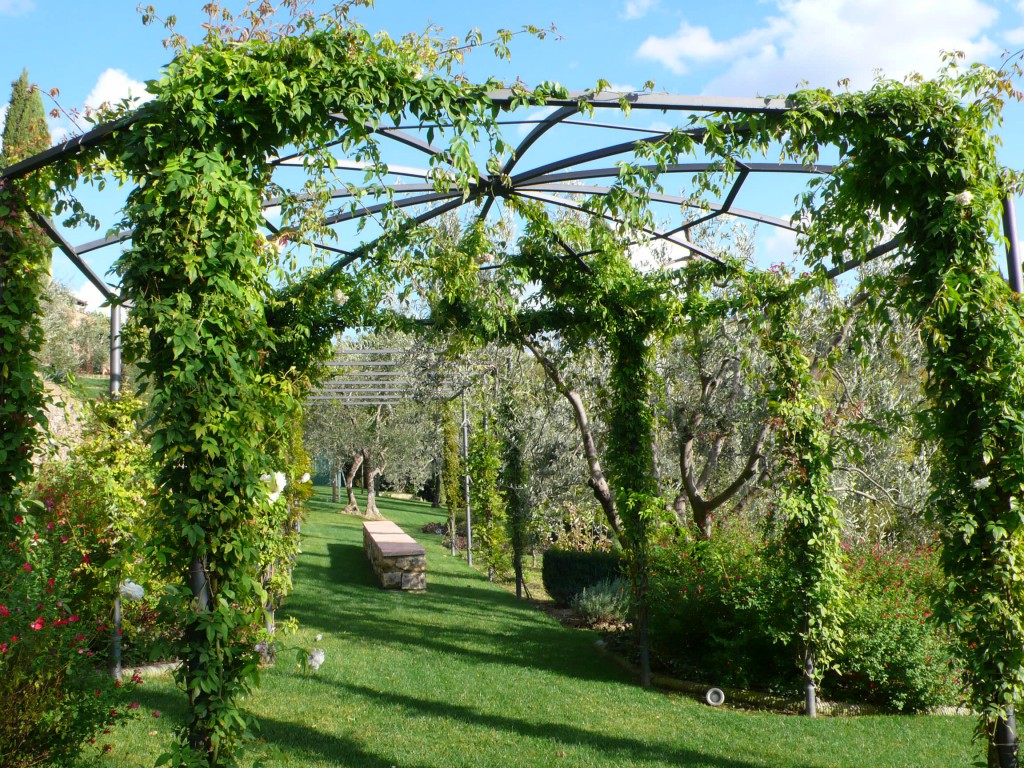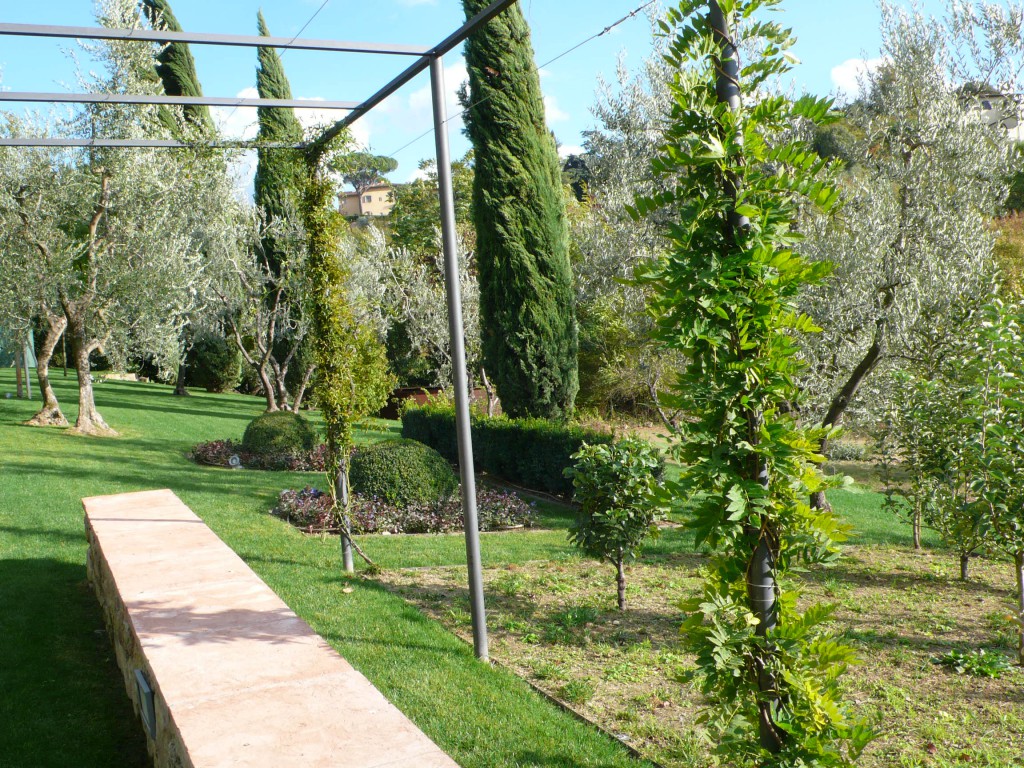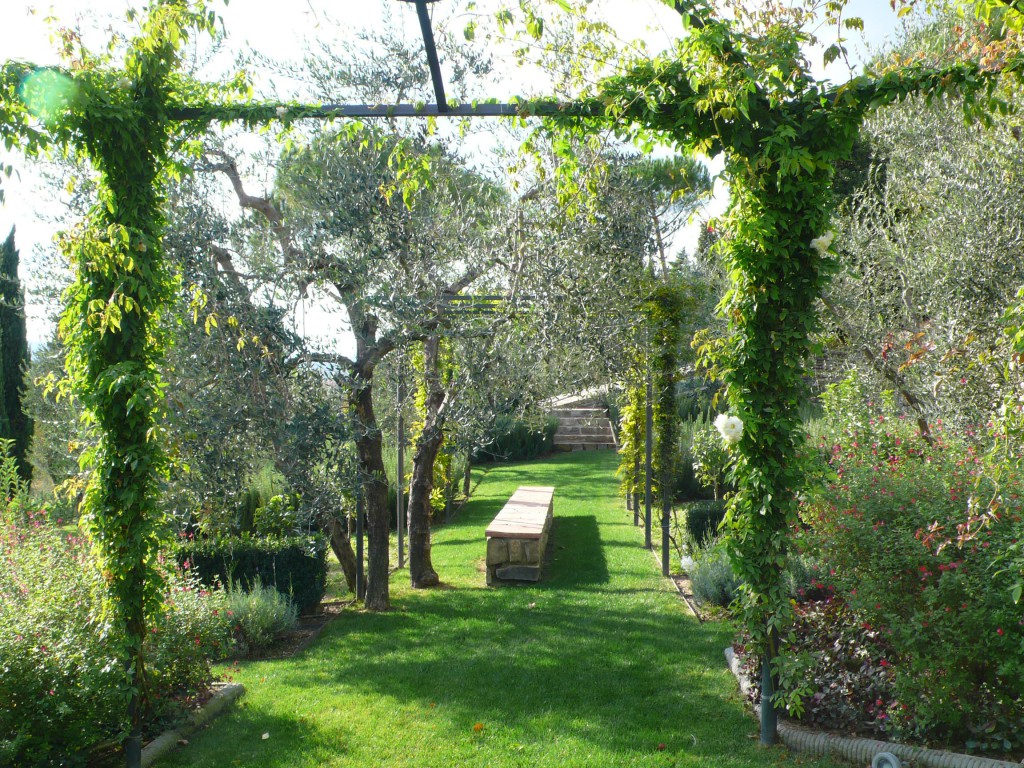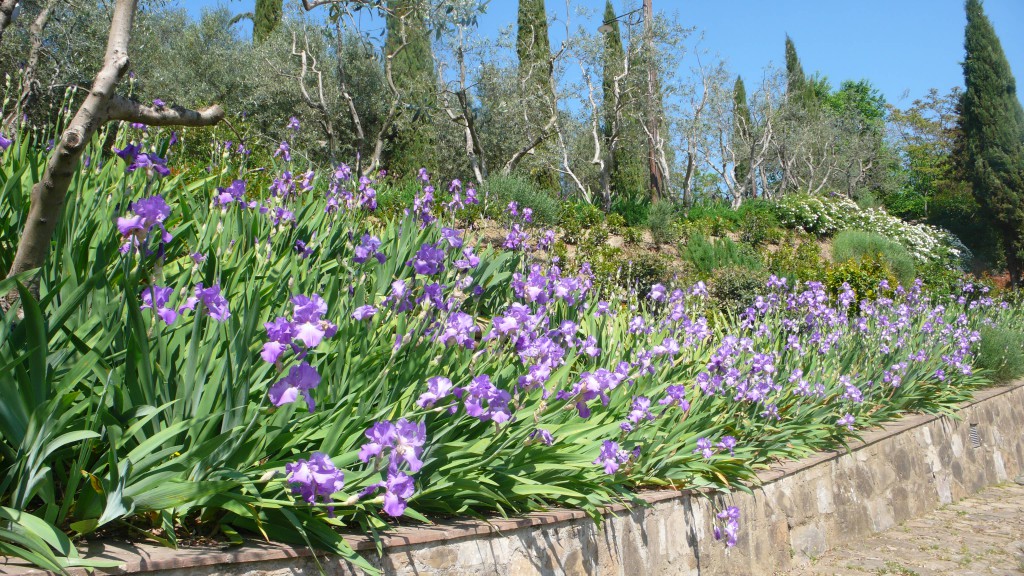Dopo qualche tempo che il cantiere del giardino che abbiamo chiamato Bellosguardo 1 era iniziato, è stato deciso di proseguire con un secondo giardino che è in qualche modo lo specchio del primo, ma che non abbiamo voluto replicare in maniera identica, in quanto il terrazzo nel quale doveva essere realizzato il nuovo giardino ha una morfologia leggermente diversa dal primo. Si tratta di una terrazza molto larga, simile alla prima, ma divisa in due livelli da un muretto in pietra macigno, quella pietra giallo ocra che si trova anche in tanti muri di Firenze .
L’idea che ha strutturato questo giardino ha preso il via proprio dal muretto che esisteva e che non ho voluto eliminare, piuttosto ho seguito un metodo che ho imparato soprattutto nel mio lavoro di restauro di monumenti: trasformare gli ostacoli in opportunità.
Ho conservato il muretto trasformandolo in una lunga panca in muratura, e attorno al muretto si è sviluppato il giardino costruito su due pergole collegate al centro da un gazebo in ferro ricoperto di rose.
Attorno alle pergole sono state realizzate aiuole di prato fiorito e frutteti in miniatura con piante da frutto nane e piante a cordone che costituiscono una recinzione viva. All’ingresso del giardino dalla parte della casa sono state delle aiuole quadrate con bossi a sfera e un tappeto di ceratostigma.
Some time after the start of work on the garden that we called Bellosguardo 1, it was decided to continue with a second garden. In some respects it is a reflection of the first garden, although we did not want to replicate it exactly, also because the terrace on which the new garden was to be created has a slightly different morphology. It is very broad, similar to the first terrace, but is split into two levels by a low wall of “macigno”, the ochre-coloured stone which is also found in many walls in Florence.
The idea behind this garden began from this same stone wall. The wall was there, and I did not want to get rid of it. Instead, I adopted a method which I learnt especially in my work on restoring monuments: turning obstacles into opportunities. I kept the wall, turning it into a long stone bench, and the garden grew around the wall, comprising two pergolas joined in the middle by a metal gazebo with roses trained over it. Around the pergolas, flower meadows were created and miniature fruit orchards, with dwarf fruit plants and climbing plants forming a living boundary. At the entrance to the garden, on the side where the house stands, square flower beds were created with box tree hedges trimmed into spheres, and a carpet of ceratostigma.

